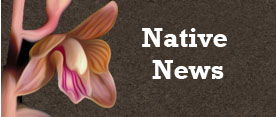NC Native Plant Society:
Plant Details
Prunus caroliniana [= Laurocerasus caroliniana]
Carolina Laurel Cherry
Scientific Name: |
Prunus caroliniana [= Laurocerasus caroliniana] |
|---|---|
Genus: |
Prunus |
Species Epithet: |
caroliniana |
Common Name: |
Carolina Laurel Cherry |
Plant Type |
Tree |
Life Cycle |
Perennial |
Plant Family |
Rosaceae (Rose Family) |
Native/Alien: |
NC Native |
Invasive Status: |
(*Key) |
Size: |
12-36 ft. |
Bloom Color(s): |
White |
Light: |
Sun - 6 or more hours of sun per day, Part Shade - 2 to 6 hours of sun per day |
Soil Moisture: |
Dry, Moist |
Bloom Time: |
Feb, March, April |
Growing Area: |
Sandhills, Coastal Plain |
Habitat Description: |
Maritime forests and sandy hammocks in the Coastal Plain, escaped from cultivation to fencerows and suburban forests and thickets in more inland areas. In NC, common in maritime portions of southern coastal counties, and locally numerous farther inland in the southern Coastal Plain, but rare in the Sandhills (at least as a native). Accidental in the Piedmont, where certainly not native. |
Leaf Arrangement: |
Alternate |
Leaf Retention: |
Evergreen |
Leaf Type: |
Leaves veined, not needle-like or scale-like |
Leaf Form: |
Simple |
Life Cycle: |
Perennial |
Wildlife Value: |
Highest Wildlife Value |
Landscape Value: |
Recommended and Available |
State Rank: |
S3: Vulnerable (*Key) |
Global Rank: |
G5 - Secure (*Key) |
|
Evergreen leaves are thick and shiny Austin,TX Larry Mellichamp |
|
|
Evergreen leaves and drupes. Wakulla Co, FL Larry Mellichamp |
|
Links: |
|
back to top
go to plant details search
go to plant images search
go to gallery home
back to Initial p Gallery
back to orchids
back to Carnivorous Plants
back to Trilliums

![Evergreen leaves are thick and shiny of Prunus caroliniana [= Laurocerasus caroliniana] The Scientific Name is Prunus caroliniana [= Laurocerasus caroliniana]. You will likely hear them called Carolina Laurel Cherry. This picture shows the Evergreen leaves are thick and shiny of Prunus caroliniana [= Laurocerasus caroliniana]](https://ncwildflower.org/images/plants/Prunus_caroliniana_TLM__3-14-2014_Austin%2C_TX.JPG)
![Evergreen leaves and drupes. of Prunus caroliniana [= Laurocerasus caroliniana] The Scientific Name is Prunus caroliniana [= Laurocerasus caroliniana]. You will likely hear them called Carolina Laurel Cherry. This picture shows the Evergreen leaves and drupes. of Prunus caroliniana [= Laurocerasus caroliniana]](https://ncwildflower.org/images/plants/Prunus_caroliniana_TLM_1-27-2015_Wakulla_Co%2CFL_fruits.JPG)


